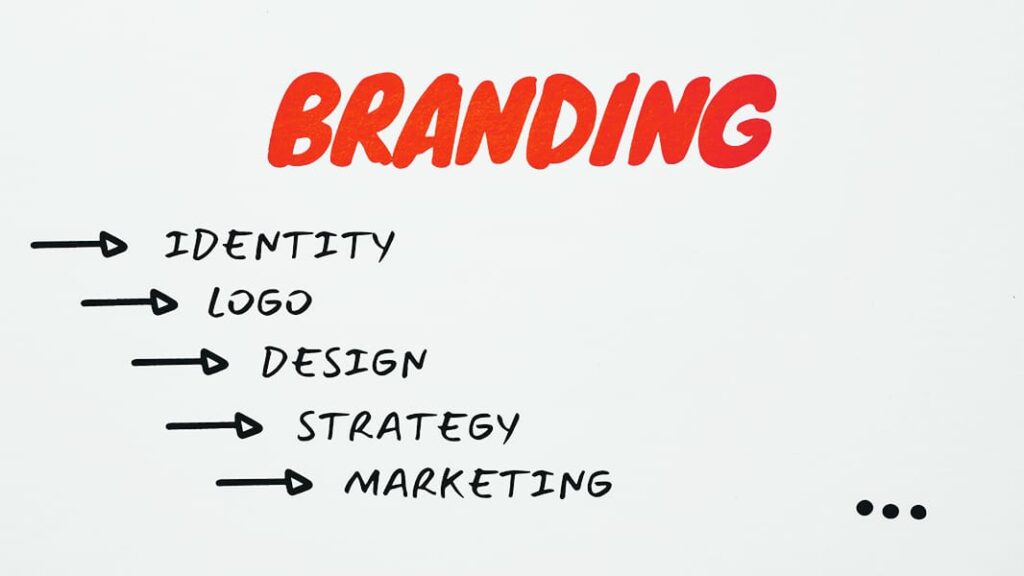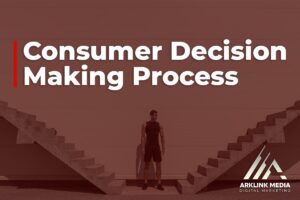Have you ever thought about the process behind your purchasing decisions? Whether we realize it or not, our brains are constantly evaluating and weighing the pros and cons of different options, making us go through a series of steps before committing to a purchase. This is known as the consumer decision making process.
In this blog post, we will explore the stages of the consumer decision making process and the importance for businesses to understand the customer journey in order to effectively market their products or services.
1. Recognizing a Need or Want
This is the starting point for the consumer’s decision making process and occurs when a consumer becomes aware of a gap between their current state and their desired state. This gap can be triggered by internal factors, such as a personal desire for a specific product, or external factors, such as an advertisement, promotion or recommendation.
-
How consumers identify a need or want
-
The role of advertising and marketing
Have you ever found yourself in a situation where you realized you needed something that you didn’t previously know you needed? That’s what we call problem recognition, and it’s the first stage of the consumer decision making process. It’s the point at which the consumers recognize that there’s a problem or need that can be addressed by a product or service.
What triggers problem recognition? It could be an internal or external stimulus. For example, you may realize you need a new car after your current one breaks down, or you may see a fashion show and decide you need a new dress.
Personal characteristics, such as your values, goals, and internal information can also influence problem recognition.
And let’s not forget about external factors, like external information, marketing messages, social influences, and environmental factors.
An example would be seeing an ad for a new smartphone and deciding it’s time to upgrade, or maybe a friend recommends a new restaurant and based on this recommendation, you decide to try it out on your next date.
Understanding problem recognition is important for businesses as it can help them identify triggers that lead consumers to start the buying process by recognizing a need or problem and tailor their marketing efforts and product offerings accordingly.
By addressing the factors that influence problem recognition, businesses can increase the likelihood of attracting and retaining customers.
2. Information Search
This second stage is the information search stage, or research stage in which a person look into finding the products or services that might solve their need and/or problem.
-
How consumers gather information about products and services
-
The importance of a digital marketing strategy for the final buying decision

There are all sorts of ways that your potential customers can look for you, like talking to friends and family or doing an external search online.
This is where having a properly built website, a great social media presence and SEO strategy can help the potential consumer find you instead of your competitors.
By implementing a digital marketing strategy that focuses on reaching the right audience at the right time with the right message, businesses can help increase brand awareness, generate leads, influence buying behavior and ultimately drive sales and revenue for the business.
3. Evaluation of Alternatives
The third stage happens after the potential consumer has found your products or services but is comparing you to your competitors before making a purchase decision. Here is where great branding and having reviews will help you.
-
Factors that influence the evaluation of alternatives
-
The impact of branding and reputation

When evaluating and comparing different products and services, consumers may consider a variety of factors such as price, quality, durability, convenience, consumer reviews and customer service.
They may also consider the reputation of the company or brand, and any warranties or guarantees offered.
Branding and reputation can have a significant impact on the evaluation of alternatives by consumers.
A strong brand can create a sense of trust and reliability, leading consumers to view the brand’s products or services as a safe and desirable choice and help the buyer decision making process.
On the other hand, a poor reputation can have the opposite effect, causing consumers to avoid a company’s products or services.
Information about a company’s reputation can be easily accessed and shared online through reviews, ratings, and social media and if the consumer identifies the products as being inferior to the competition, the logical conclusion is they will choose your competitors products instead.
In addition to influencing consumers’ perceptions of the products or services themselves, branding and reputation can also affect the perceived value of the products or services and purchasing decision of the potential customer.
A strong brand can add perceived value to a product, making it more desirable and worth a higher price.

For example, you are looking a for help with web design and are considering 2 companies:
The first company has a strong brand, a great website and offers a variety of high-quality services all while having a reputation for excellent customer service.
The second company offers the same services but lacks branding and has poor web design. Maybe their site loads slow or they don’t have a logo. Or maybe talking to a human at customer service is impossible.
Which would you pick? How about if the choice you didn’t pick was slightly cheaper, is your answer still the same?
Keep in mind, your ideal consumer recognizes quality and understands the value of time.


Schedule a free consultation and ask about our affordable web design packages.
4. Purchase Decision
In the fourth stage, the person has already weighed different alternatives of the consumer decision process and makes the final purchasing decision.

5. Post-Purchase Evaluation
Post-purchase evaluation is the final step in which a customer reflects on their satisfaction with the purchased product or service.
This stage can influence consumers likelihood to make future purchases from the same business and/or recommend it to others.
-
How consumers evaluate their satisfaction with the purchased product or service
-
Factors that influence post-purchase evaluation

Let’s use an example of someone that just bought a new phone and has been using it for a few weeks.
If this person is satisfied with their purchase, they may be more likely to make future purchases from the same company and recommend it to others.
On the other hand, if they are not satisfied with their purchase, they will be less likely to make future purchases from the same brand and may give negative feedback about the phone and even request a refund.
In this case, factors that may influence post-purchase evaluation could include the person’s initial expectations for the smartphone, their overall satisfaction with its performance, and any issues or problems they experienced with it.
The Influence of Emotions
Emotions play a significant role in the five stages of the consumer decision making process as they often direct attitudes, preferences, and behaviors. Consequently influencing the types of products and services individuals are attracted to and how they make the final buying decision.

Positive emotions can lead to impulsive or risk-taking decisions, while negative emotions can lead to caution and a preference for familiar products.
Emotions also play a role in how individuals perceive the value and quality of products, with positive emotions leading to a perception of high value and negative emotions leading to skepticism.
Marketing messages and branding can also evoke and influence emotions, making them a powerful tool in influencing consumer behavior.
Businesses that understand the role of emotions in the decision making process can use this knowledge to appeal to consumers’ emotional needs and desires and ultimately influence the consumer purchase decision.

Step-by-Step
1. Identify and address the factors that influence the purchasing decisions of the target audience and tailor marketing efforts and product offerings to get found during the consumers search.
2. Anticipate potential barriers to purchase: By understanding the consumer decision making process and how the consumer reflects before purchase, your businesses can address barriers such as price or availability, and overcome them ahead of time.
3. Stay competitive: By understanding the consumer decision making process, your businesses can stay competitive by identifying and addressing the needs and preferences of your target audience.
4. Build trust and credibility with customers: By understanding the key factors that influence purchasing decisions, your businesses can build trust and credibility with your customers and establish a positive reputation in the market.
5. Enhance customer satisfaction: Offer them a free sticker with their purchase or a discount on the next purchase. By understanding the consumer decision making process and tailoring marketing efforts and product offerings to meet the needs of their target audience, your businesses can enhance customer satisfaction and encourage repeat business.
6. Improve marketing efficiency: By understanding the consumer decision making process, your businesses can identify the most effective strategies and channels for reaching your target audience and improve the efficiency of your marketing efforts.
7. Stay up-to-date with industry trends: Social Media is great for this! By understanding the consumer decision making process, your businesses can stay up-to-date with industry trends and identify opportunities for growth and innovation in the market.

The Role of Web Design in Consumers Decision Making Process
Web design plays a crucial role in the consumer decision making process as it can impact how the consumer perceives the credibility and trustworthiness of a business.
A well-designed website that is visually appealing, well-organized, easy to navigate, and provides relevant and useful information can create a positive impression on consumers and make them more likely to engage with the business.
A poorly designed website that is cluttered, confusing or difficult to use or lacks relevant information can turn off consumers and make them less likely to trust the business or consider its products/services.
See our article about the The Importance of a Website as well as our Complete Guide to Digital Marketing.

At ArkLink Media we help businesses create a professional, visually appealing websites to meet their specific needs and goals.
We work with you to understand your business and create a custom website that shows your products or services, engages your target audience, and helps you achieve your online marketing objectives.
The Role of SEO and Having Quality Content
Search engine optimization (SEO) is the practice of optimizing a website in order to improve its visibility and ranking.
By optimizing a website for relevant keywords and phrases, a business can increase its visibility in search engine results, making it more likely that potential customers will discover their products or services.
In addition to increasing visibility, SEO can also help to establish a business as a trusted and authoritative source of information about its products or services.

By providing high-quality, informative content that is optimized for relevant keywords, a business can demonstrate its expertise and build credibility with potential customers.
See our SEO content packages here.
The Role of Social Media
When promoting your product online, one method is to use internal and external stimuli to encourage customers to buy.
Internal stimuli, such as information about the product’s features and benefits, can create desire for the product. External stimuli, like mentioning the date your sale begins or limited time offers, can help the decision making process by creating urgency and motivating your customer base to act fast.

Social media platforms such as Facebook, Instagram, and Twitter are where a lot of customer searches happen, and where a customer finds your business, research products and services, read reviews from previous customers, and ask for recommendations from friends and family and even make a purchase.
Posting content regularly on social media and responding to DM’s and messages will help establish you not only a trustworthy, relevant brand but also show your potential clients that you have excellent customer service. Ask about our social media management packages.
The Role of Branding
Branding helps to differentiate products and services from competitors and establishes a unique identity.

A strong brand can create a sense of trust and loyalty with the consumer, making them more likely to choose a particular product or service over others.
Branding can also influence how consumers perceive the quality, value, and functionality of a product or service.
For example, if a consumer has a positive association with a particular brand, they may be more likely to perceive the product as high quality and worth the price.
Conclusion
In conclusion, the entire process of purchasing behavior can be broken down into five steps or five stages: need recognition, information search, evaluation of alternatives, purchase decision, and post purchase behavior.
First your customers search, then your customer reflects and finally your customers buy.
During the need recognition stage, the customer journey map starts getting painted as prospective buyers become aware of a need or desire for a product or service.
This can be triggered by internal stimulus, such as a personal need or desire, or external factors, such as marketing campaigns.

Once the need has been recognized, the consumer begins the information search process, which can involve both internal search, such as consulting personal sources or their own experience, and external search, such as gathering information from external sources.
The information gathered during this stage is used to evaluate the various alternatives and buying decisions and emotions can also decide in the final decision the consumer makes.
By understanding the different stages and the factors that influence them, businesses can develop targeted marketing strategies that help to build brand awareness, influence shoppers, and encourage positive post purchase behavior.









